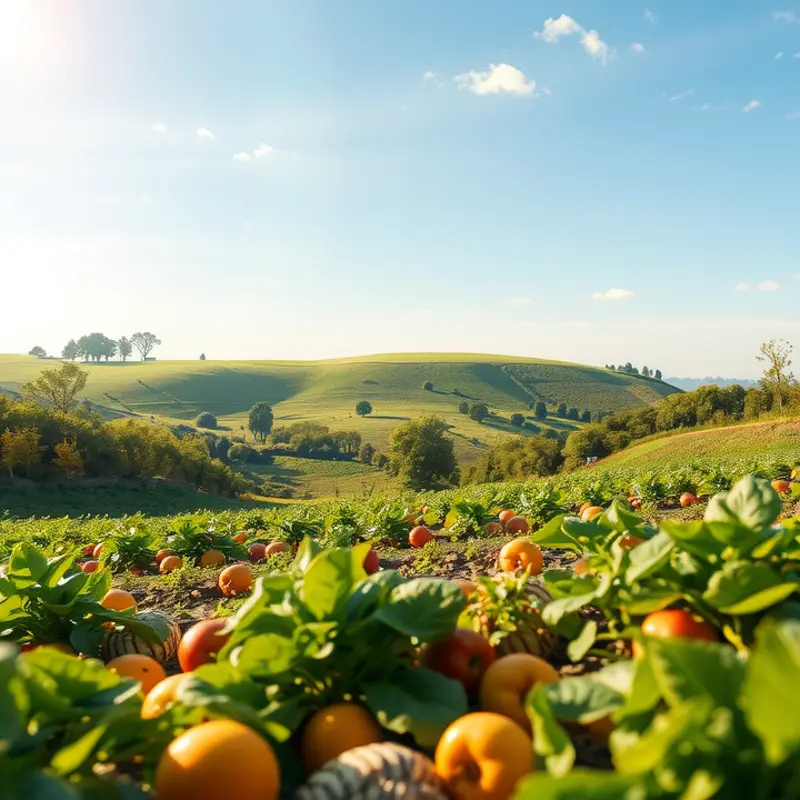When an overflow of fruits and vegetables comes into your kitchen, knowing how to manage it wisely can enhance your culinary experience. Proper handling not only preserves freshness but also minimizes waste and helps you enjoy seasonal flavors longer. This guide provides straightforward tips on food storage and efficient usage of produce, ensuring that your harvest doesn’t go to waste.
Fruit and Vegetable Storage Essentials

Understanding how to store fruits and vegetables effectively can make a significant difference in their freshness and longevity. Each type of produce has unique storage needs, which can be influenced by factors like temperature and humidity levels. Here, we’ll explore various techniques to help you master the art of produce storage.
Temperature and Humidity Considerations
The temperature of your storage area substantially affects produce life. Generally, most fruits prefer temperatures of 32-40°F, which a household refrigerator can provide. Vegetables, on the other hand, vary. Leafy greens, like lettuce and spinach, benefit from high humidity levels and prefer the cold crisper drawer of your fridge. Meanwhile, produce like potatoes and onions should be stored in cool, dark, dry places at room temperature to avoid sprouting.
Refrigeration Tips
Not all produce belongs in the fridge. For instance, tomatoes, cucumbers, and peppers lose flavor and texture when kept in cold environments. Instead, store these on your kitchen counter away from direct sunlight. Ethylene-sensitive items like apples and bananas should be kept separately to prevent overripe neighboring fruits. Refrigeration is perfect for berries, which should be rinsed right before consumption to reduce mold growth.
Optimal Use of Containers and Bags
The right containers and bags can extend the life of your produce. Using breathable bags for mushrooms and leafy greens helps maintain proper moisture levels while preventing spoilage. Potatoes and onions stored in paper bags allow them to breathe, reducing the growth of mold and toxins. If you’re keen on reducing waste, consider repurposing existing kitchen items or explore eco-friendly storage options further here.
Versatile Storage Solutions
For root vegetables such as carrots and radishes, consider storing them submerged in water in the refrigerator. This technique keeps them crisp and fresh for weeks. Herbs are best stored upright in jars with a small amount of water, just like cut flowers, and might also appreciate a loose bag cover to trap humidity.
Positioning and Perishables
Strategic placement in your refrigerator can also prevent food waste. Reserve the back of your fridge for items that can withstand colder temperatures, while more perishable items should remain in front. Moreover, regularly rotating your produce allows you to consume older items first, ensuring nothing goes to waste.
In addressing your concerns over optimal produce storage, understanding the role of temperature, humidity, and storage techniques can significantly minimize waste. By applying these techniques, you’ll maximize the freshness of your fruits and vegetables while contributing to a more efficient and eco-friendly household.
Creative Ways to Use and Preserve Your Surplus

Harnessing the bounty of a fruitful harvest requires more than just a storage strategy. It offers an opportunity to explore creative culinary expressions and effective preservation methods that extend the goodness of fresh produce beyond its season. Here, we delve into a variety of ways to make the most of your surplus.
Smoothies are an excellent way to use excess fruits and leafy greens. Blend overripe bananas with frozen berries and a handful of spinach to create a nutrient-rich breakfast or snack. Adding a tablespoon of flaxseeds or chia seeds can enhance the texture and nutritional profile of your smoothie.
For those looking to experiment with pickle-making, cucumbers, carrots, radishes, and even watermelon rinds can be transformed into tangy treats. Simple brine solutions featuring vinegar, water, salt, and sugar are your best companions. Add herbs and spices like dill, garlic, or chili flakes for extra flavor. This method not only preserves but also reinvents your produce.
Freezing is another straightforward approach to preserve freshness. Before freezing vegetables such as broccoli or peppers, blanch them quickly in boiling water to preserve color and texture. Once cooled and dried, they can be stored in airtight containers or bags. The same technique applies to fruits like strawberries or peaches—freeze them on a baking sheet first, then transfer them to containers to prevent clumping.
Dehydrating fruits and vegetables unlocks a unique preservation method that is both sustainable and effective. By removing moisture, fruits like apples, apricots, and tomatoes become lightweight snacks that retain their sweetness and nutrients. Use a dehydrator or your oven on a low setting. Once dehydrated, store them in glass jars or vacuum-pack them to extend their shelf life.
Canning, though more intricate, is an exemplary method for long-term storage. Whether you’re making sweet preserves from stone fruits or savory tomato sauces, the principles of canning remain the same: sterilize jars, fill them with your preparation, and seal them under heat. This technique requires attention to detail but offers the reward of enjoying home-grown flavors year-round.
For an innovative approach to avoiding waste, consider fermenting vegetables such as cabbage or beets. Fermentation preserves flavors and introduces beneficial probiotics to your diet. By harnessing the natural process of lactic acid fermentation, you can create dishes like sauerkraut and kimchi, which not only save surplus but also enhance your gut health.
Each method here is a step toward a more sustainable and enjoyable kitchen practice. Dive deeper into storing your sauces smartly with safe techniques to expand your culinary creativity in Safer Storage of Sauces. By embracing these practices, you ensure that your home is always filled with the flavors of a fruitful harvest, ready to enrich your meals no matter the season.
Final words
Effectively managing excess produce is more than just a practical skill; it’s a sustainable practice that benefits you, your community, and the planet. Proper storage techniques ensure that your fruits and vegetables maintain their flavor and nutritional value for longer periods, while creative methods for preservation and usage help prevent waste. By following these straightforward tips, you can enjoy the benefits of a productive kitchen and contribute to a greener future. Embrace this opportunity to get the most out of your harvest!







